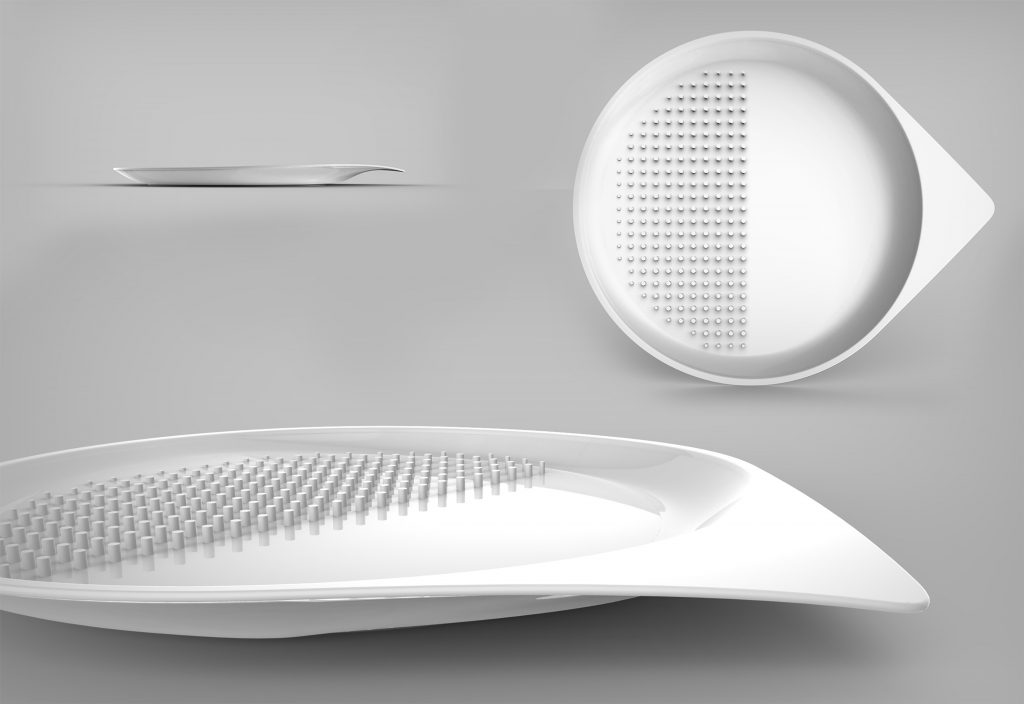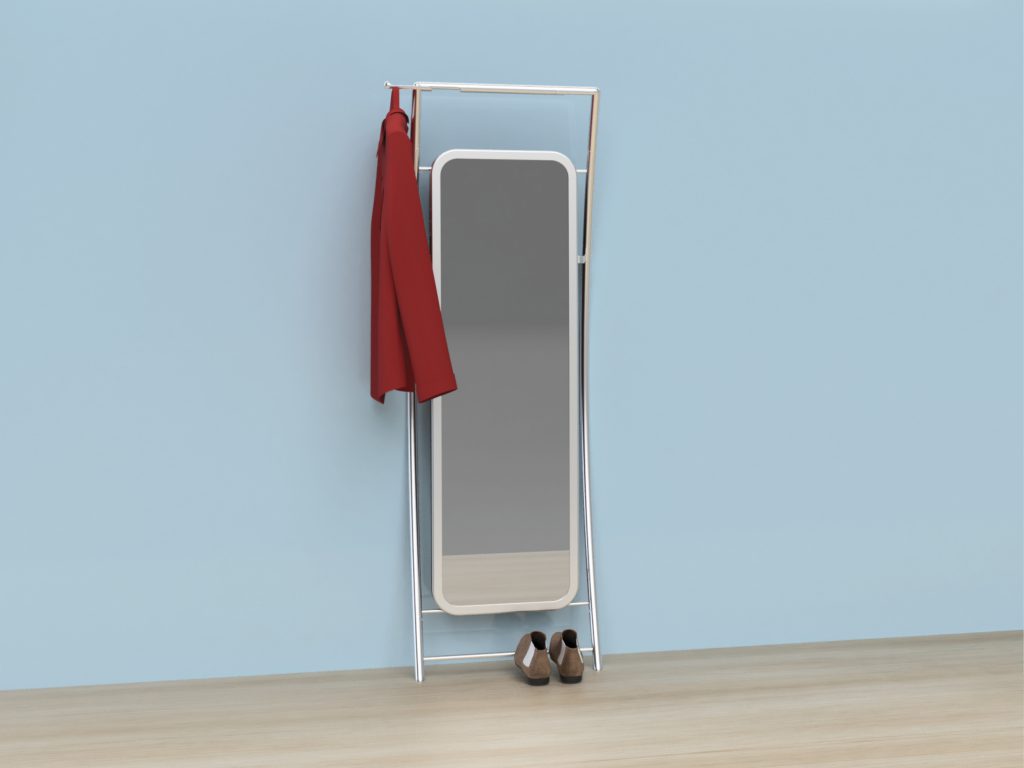Student Design Competition Winners : 2017
For the first time in the 24-year history of the International Housewares Association’s Student Design Competition, an industrial designer has won first, second and third place, prompting the creation of a new Outstanding Achievement Award for the winner, Dominic Montante, a senior at the Cleveland Institute of Art (CIA) from Rochester, N.Y.
The Student Design Competition’s annual challenge to students is to redesign a current housewares product to meet the needs of the future, or to create a concept for a new product. Winning projects are selected for their innovation, understanding of production and marketing principles, and quality of entry materials.

In recognition of his exceptional feat, Montante will receive a $5,000 cash prize and an all-expense paid trip to Chicago for the 2017 International Home + Housewares Show, March 18-21. His winning product concepts may be seen by approximately 62,000 attendees and more than 2,200 exhibiting companies from more than 100 countries. Joining Montante at the Show will be one first-, one second- and two third-place winners who will share $6,500 in prize money. Their four schools will receive grants to total $2,500.
Montante won first place for his concept, the Klima Indoor Climate System. A window-type air conditioner, the Klima hangs over, not in, a window frame, providing the user with a clear view through the window and the ability to open it. Klima’s two-part assembly is easy to install for one person, and the unit can stay in place all year to function as an air conditioner or a heater. It monitors electricity usage and learns a user’s schedule to adjust temperatures and conserve power. Judges in the blind judging process noted that Montante “identifies and solves multiple problems with traditional window units” and cited his “professional level development, process, ideation and prototypes,” as well as his “skillful visual presentation and narrative.”
As the child of Italian and Laotian immigrants, and in the tradition of his grandfather, a craftsman, he began drawing from the time he could hold a pen. However, “unlike other kids who drew their families or pets, I’ve always drawn consumer products like vacuums and cars,” he said. “When I was determining a career path, industrial design seemed like a natural extension of what I’d been doing my whole life.” His three winning projects were assigned as part of the CIA curriculum, and he chose to improve on the design of objects “which have inconvenienced me personally in my day-to-day life,” he added.
Montante’s second place design is the Kipp Sofa/Table, a space-efficient furniture system featuring three upholstered chairs and a table that combine into a sofa. Targeted toward young people who move often, the lightweight and convenient set quickly disassembles into four pieces that are easy to carry by one person. Designed for small apartments, Kipp fits through narrow doors, stairways and small elevators. Constructed of sustainable materials, its minimalist styling enhances modern interiors.
Montante’s third place entry, Scelto One Coffeemaker, brings the quality materials and craftsmanship of conventional stovetop espresso brewers to a single-serve electric coffee maker. Designed to reduce waste, its simple construction reduces parts and production costs, reduces operational failures and its components are recyclable. Users can measure their favorite grounds into the stainless steel reusable filter and brew coffee into their own mug. Scelto’s slim form frees space and adds personality to the countertop.
Additional First, Second and Third Place Winners
First place and $2,500 was awarded to Michael Laudi, a senior at the Cleveland Institute of Art, for Rose Plate, a plate that assists people with only one available hand to cut food, promoting their independence and enhancing quality of life. The surface of the plate features textured rubber thorns that hold food in place and create cutting channels for a knife. The plate’s form provides an ergonomic grip for easy one-handed carrying and a basin for food to collect near the side wall for easier scooping.

A second-place award of $2,000 went to Nicole Norris, a senior at Virginia Polytechnic Institute and State University, for her design of the Wrinklerack Compact Ironing Station. Wrinklerack combines a mirror, ironing board and clothes rack for sleek décor and storage. Wall-mounted for stability with a support tube that also functions as a shoe rack, Wrinklerack includes hooks for hanging clothes and an iron storage shelf with a built-in power outlet. Easy to maneuver for all ages, the board lifts smoothly into position and can be adjusted to three heights.

Third-place awards of $1,000 each went to: Reed Fansler, a Purdue University senior, for Belay Cable Management, and to Daniel Lopes, a University of Notre Dame senior, for Scoop Pet Food Dispenser. The Belay clip controls cord clutter to organize thin or thick cables of electronic devices and entertainment equipment. Flexible for users with any level of dexterity, the color-coded Belay units can stand alone, snap together or attach to furniture or a wall. Made of recycled plastic, Belay is packaged in a clear container that can be reused to serve varied household needs. The Scoop Pet Food Dispenser eases measuring and serving of dog food, freeing users from bending to reach the food in large bags or deep containers. Made of a flexible plastic, Scoop is a simple cup with a long hollow handle that funnels food from the cup to the handle tip. The tip springs open to release the food when pressed against the pet’s bowl.
10 Honorable Mentions Awarded
In addition, students receiving an honorable mention and a $250 cash award include:
- Hank Womble, Auburn University senior, Shepard Laundry Basket
- Billy Yrad, Cleveland Institute of Art senior, The Perch Dog Bathing Solution
- Dominic Atibil, Purdue University senior, Squiigii Toilet Bowl Cleaner
- Jack McGann, Purdue University senior, Greacycle Cooking Grease Collector
- Andi Wang, Purdue University senior, S’Velte Lunch Box
- Jack Fulton, The Ohio State University junior, Snipbirds Children’s Scissors
- Erin M. Rice, University of Notre Dame senior, LEAD Animal Control Dog Cage
- David Barrett, Virginia Polytechnic Institute and State University senior, Wave Dishrack
- Austin Ledzian and Mark Meardon, Virginia Polytechnic Institute and State University juniors, Polaris Responsive Night Lights
- Charlie Prescott, University of Illinois at Urbana-Champaign senior, Stem Herb Stripper
Altogether, there were 297 entries from 28 schools—including universities in Israel, India, Portugal and Denmark.
Vicki Matranga, who heads IHA’s design programs and services and manages the Student Design Competition, said, “IHA’s program has become known as the gold standard for college-level competitions. Many U.S. professors assign the program annually to industrial design students because it is a real-world exercise and every entry receives feedback from two industry professionals. Students must identify user needs and opportunity spaces in the marketplace, research competitive available products, test models with users, and consider production issues.”
Judges Laud Contest, Quality of Program
This year’s winners were chosen by a respected jury, including the founders of two design-driven IHA member companies, design managers at consumer products companies, a major retailer, design consultants and two educators. Altogether, judges spend hundreds of volunteer hours in reviewing the submissions, which consist of written materials, sketches, engineering drawings and photos.
“Dominic’s remarkable triple win resulted not only because of his hard work, but due to the anonymous judging process,” Matranga said. “The entries, known only by number, were assigned randomly to the 14 judges. His projects rose to the top in the group of best concepts chosen by the judges to be reviewed in the final round.”
“As a judge, I had the opportunity to see a glimpse into the future of housewares design, and at the same time, to participate in its creation. It felt like a true collaboration with students,” said Drew Carlson, senior industrial designer, Hamilton Beach Brands, Glen Allen, Va.
Second-time judge Sarah O’Brien, a 2008 first place winner and an honorable mention recipient in 2006, called the competition “a great equalizer.” The independent designer added, “Whether an entrant comes from a well-known design school or a small upstart program, students are judged solely for their skills.” Serving as a jurist for the third year was Kaitlyn Benoit, a third-place winner in 2009, now a senior industrial designer with Smart Design in New York.
In addition to Carlson, O’Brien and Benoit, the jury included: Gil Cavada, design director, Product Development Technologies, Lake Zurich, Ill.; Daniel Blake, global designer, team sports, Wilson Sporting Goods, Chicago; Joe Fiore, III, senior QA and technical designer, product integrity-quality, J.C. Penney, Plano, Texas; Marianne Grisdale, vice president/creative director, TEAMS Design, Chicago; Bruce Kaminstein, executive chairman, Casabella Holdings LLC, Congers, N.Y.; Audra Norvilas, design director, Kaleidoscope, Chicago; Lauren McDermott, associate professor of industrial design, interim director, The Design School, Arizona State University, Tempe, Ariz.; TJ O’Keefe, clinical assistant professor of industrial design, University of Illinois at Chicago; Paul Rowan, co-founder, Umbra, Toronto, ON; Christopher C. White, senior brand consultant, Dallas, Texas; and Christina Whitehouse, principal, Whitehouse Uprising, Chicago.
Kaminstein said, “Being a judge was a fantastic experience. I learned a lot from the students and from the other judges. It was exciting to see so much young talent from many schools and I was inspired by the innovative product ideas we reviewed. Casabella has hired past winners, so we know how our industry benefits from this competition which encourages young designers to seek careers in housewares.”
24 Years of Exceptional Student Design
This is the 24th year that winning design students have been honored at the International Home + Housewares Show, expanding awareness of careers in industrial design among students and highlighting the impact of design on the $314.3 billion global housewares industry. Since the competition began in 1993, more than 5,000 college students have entered, and each has come away with an educational experience that the design profession recognizes as unique.
“I wish I had known about this competition when I was a student,” Grisdale said, “It’s great for not only the winners, but all the entrants because they get personalized feedback on their designs. As a judge, I am thankful to the IHA for allowing me to experience the energy and passion these winners bring to their projects.”


